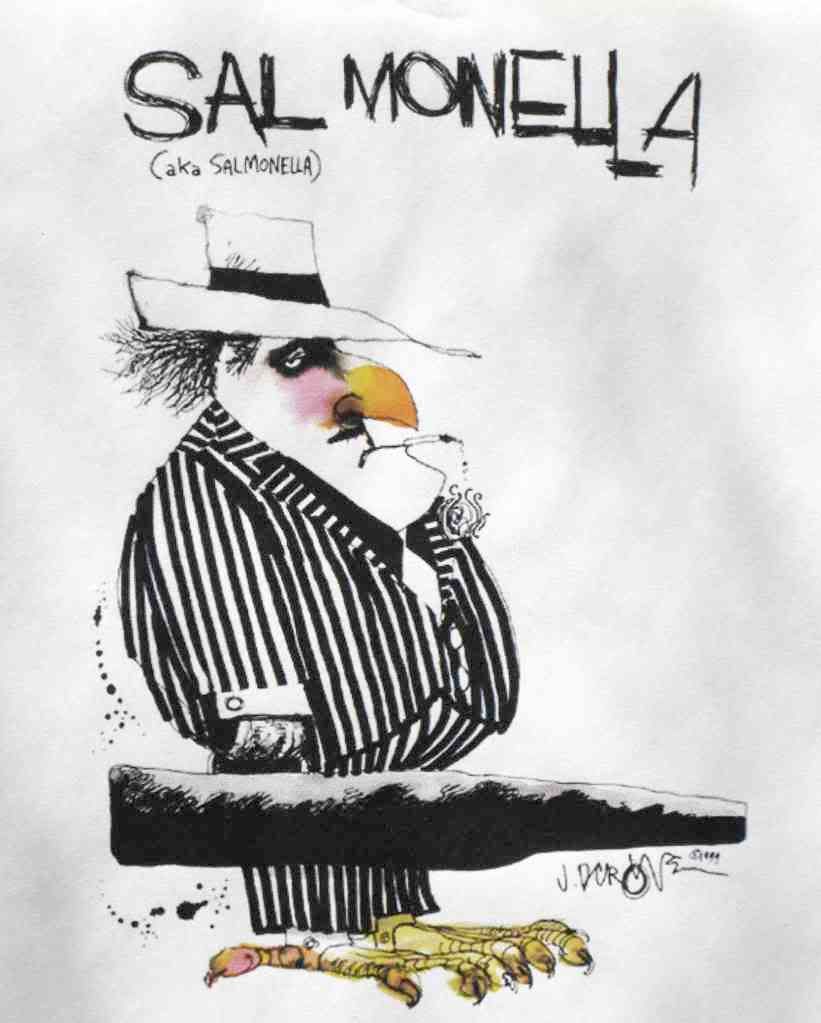 I'm not the only one to wonder what CDC and FDA might be missing in their investigation of this large and complex outbreak. Jim Prevor (The Perishable Pundit) floated a couple of "outside the box" hypotheses in his column today.
I'm not the only one to wonder what CDC and FDA might be missing in their investigation of this large and complex outbreak. Jim Prevor (The Perishable Pundit) floated a couple of "outside the box" hypotheses in his column today.Prevor suggested that one possible source of the second phase of this outbreak might be secondary infections transmitted by victims who are still carrying the outbreak strain. He suggests that some of these individuals might work in food service and – a la Typhoid Mary – could contaminate the food they are handling. This is an interesting theory, and one that has not been mentioned in any of the FDA/CDC media conference calls.
Prevor's second hypothesis – cross-contamination in the kitchen with Salmonella Saintpaul from raw chicken – is more far-fetched. While Salmonella Saintpaul has been reported in poultry in the past, it's unlikely that raw chicken, all carrying the outbreak strain, would account for the geographical distribution that has been documented by CDC and state health agencies.
I have just finished reading the transcript from yesterday's FDA/CDC media conference call, which is available for download from the FDA outbreak investigation web page. Here are some of the more intriguing (to me, at least) tidbits from that conference.
- Early on in the outbreak, there were no illness clusters. The first cases were scattered and not tied to dining out. More recently, many of the cases have occurred in clusters of victims who dined out together.
- While the highest density of cases are located in Texas and New Mexico – two states with large Hispanic populations – the case clusters are not linked to any one ethnic food type.
- The epidemiological data that fingered jalapeno peppers are not as compelling as the earlier data that pointed to raw tomatoes. Fewer than 50% of the victims included in the later study consumed jalapeño peppers; approximately 80% of victims reported having eaten raw tomatoes in the earlier case control study.
- What is the growing/harvest sequence for tomatoes and peppers in the three Mexican states still under the microscope – Jalisco, Sinaloa and Coahuila? Does the timing of the harvest correlate with that of the outbreak?
- Do any of the farms in those states grow both tomatoes and peppers?
- Are there any common elements on these farms, such as fertilizer or irrigation water, that could link the tomato and pepper crops?
- Do any of the farms grow tomatoes and then peppers in the same field? Salmonella is able to survive for up to six weeks in soil after harvest, and can contaminate successive crops if they are planted soon enough after each other.





No comments:
Post a Comment
Note: Only a member of this blog may post a comment.